About Hollyhocks
Hollyhocks (Alcea rosea) are herbaceous flowering plants belonging to the mallow family (Malvaceae), widely recognized for their tall, upright growth and large, colorful blooms. Originally native to China, hollyhocks have been cultivated for centuries and are now common in many ornamental gardens throughout the world. The plant grows to a height of 1.5 to 2.7 meters (5 to 9 feet) and is typically used as a backdrop in garden beds due to its tall stature and stunning, spire-like blooms. Hollyhocks come in several forms, including annual, biennial, and short-lived perennial types, and produce flowers in shades of white, pink, red, yellow, and even near-black varieties.
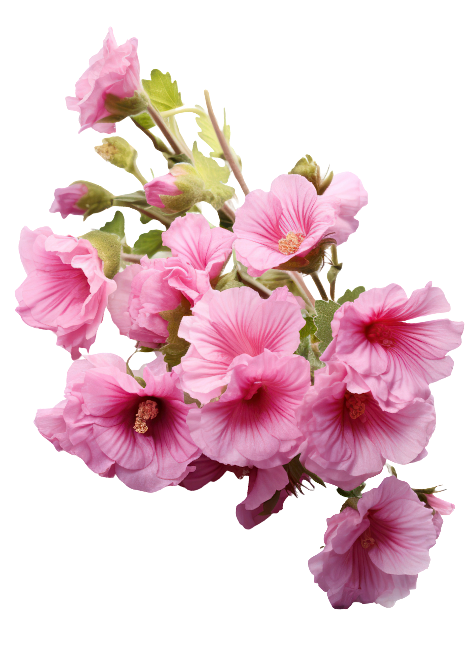
Botanical Classification and Physical Characteristics
Alcea rosea is a member of the Malvaceae family and falls within the Malvales order. It is classified as an angiosperm and, more specifically, as a dicot flowering plant. The plant’s flowers are large, up to 7.5 cm (3 inches) or more in diameter, and appear along the tall stalks, which helps create a striking visual display. Hollyhocks have large, heart-shaped leaves with distinctly veined lobes, providing a textured backdrop for the colorful flowers. The flowers attract pollinators, including hummingbirds and butterflies, adding value to garden ecosystems.
Cultivation and Growing Conditions
Hollyhocks are versatile and can be cultivated in a range of conditions. They thrive best in well-draining soil and full sun exposure, requiring at least 6 to 8 hours of direct sunlight daily for optimal growth and bloom production. While they can tolerate different soil pH levels, hollyhocks prefer fertile soil enriched with compost. They are hardy in USDA Zones 3 to 8, meaning they can withstand a range of climates, though extreme heat or cool temperatures can impact their growth. Hollyhocks need moderate watering and prefer watered at the base to prevent their leaves from getting wet, reducing the risk of fungal diseases such as rust.
Propagation and Life Cycle
Hollyhocks are most commonly propagated from seed. They can be direct-sown into the garden in spring or mid-summer, and the seeds typically germinate within 1 to 2 weeks. Hollyhocks are often considered biennials; during the first year, they produce a rosette of leaves, and in the second year, they flower and produce seeds. However, many hollyhocks are prolific self-seeders, giving the impression that they are perennials because new plants will continually grow from fallen seeds.
Common Pests and Diseases
Hollyhocks are susceptible to several pests and diseases, with rust (a fungal disease) being the most significant issue. Rust is characterized by orange-brown pustules on the undersides of the leaves, which can lead to leaf drop and reduced flowering. Good air circulation and proper spacing between plants can help minimize this risk. Other pests include Japanese beetles and hollyhock weevils, which can damage the leaves and flowers. Treatment with fungicides and insecticides may be necessary for severe infestations, although preventive measures like drip irrigation and maintaining garden hygiene can reduce the risk significantly.
Uses and Cultural Significance
Historically, hollyhocks have also been used for medicinal purposes. The plant’s mucilaginous properties make it useful as an emollient and in herbal remedies for conditions like inflammation and sore throat. In gardens, hollyhocks are popular as an ornamental plant due to their striking appearance and ability to attract beneficial pollinators, making them ideal for creating picturesque garden settings, particularly in cottage-style gardens.
Plant Care Tips
To ensure hollyhocks grow well, it is important to fertilize them every 6 to 8 weeks with a balanced, slow-release fertilizer formulated for flowering plants. They may require staking or support as they grow taller, especially in windy conditions. Removing faded flowers (deadheading) helps maintain the plant’s appearance and can prevent excessive self-seeding if desired. While hollyhocks generally require minimal care once established, ensuring consistent moisture, proper spacing, and sun exposure are key factors for success.
Hollyhocks are a beautiful, tall-flowering plant that provides an old-fashioned charm to gardens and a habitat for pollinators. Despite their susceptibility to certain pests and diseases, they remain a favorite in ornamental gardening for their impressive height, vibrant blooms, and ease of cultivation.
How To Grow Hollyhocks
First 3 Steps to Grow Hollyhocks
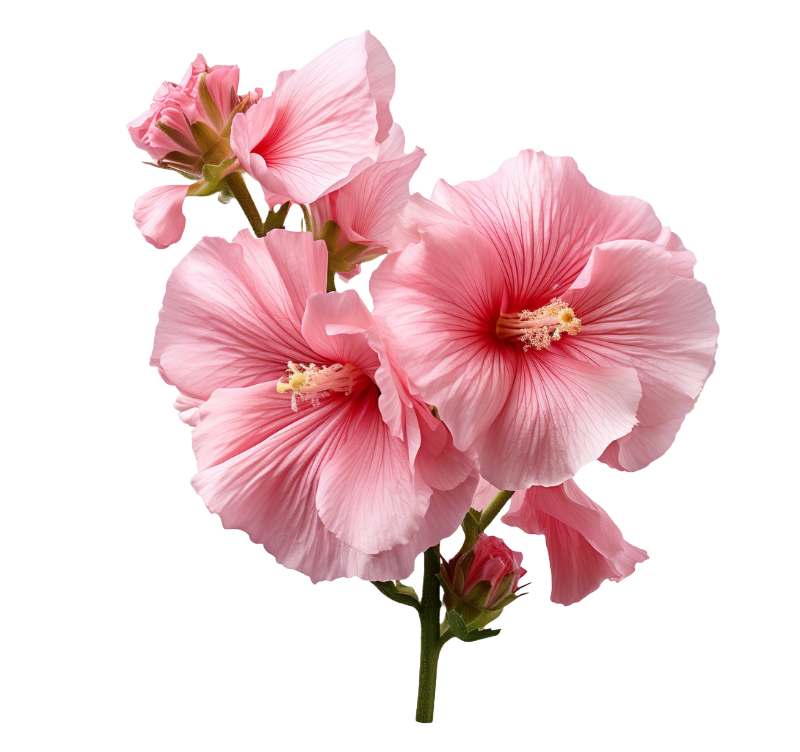
1. Soil Preparation
Add compost to prepare fertile, well-draining soil. Hollyhocks thrive in rich soil, which supports their tall growth and vibrant blooms. Well-prepared soil ensures sufficient nutrients, resulting in healthier plants and stronger flower production.
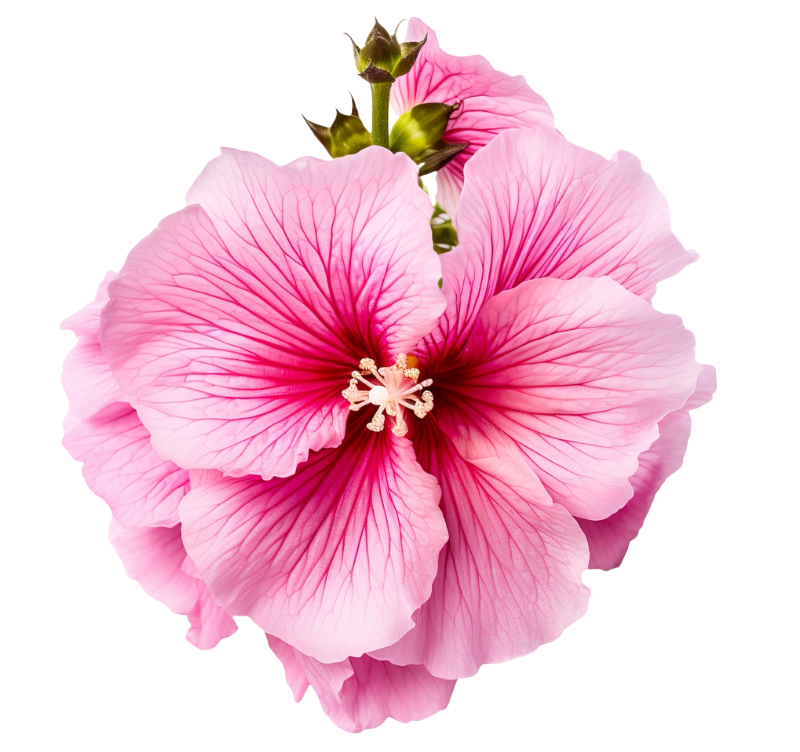
2. Sunlight Needs
Plant hollyhocks in full sun, providing at least 6-8 hours of direct sunlight per day. Adequate sunlight ensures robust growth and flower production. Insufficient light can lead to leggy growth and fewer blooms.
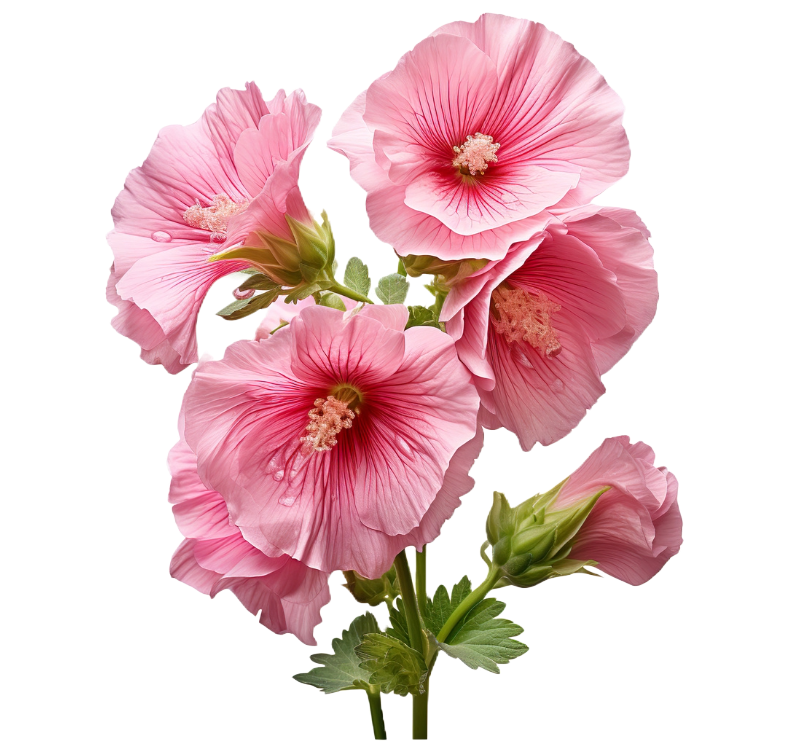
3. Water Management
Water hollyhocks at the base regularly, keeping the soil moist without wetting the foliage. This helps prevent fungal issues, like rust, and supports healthy root development while minimizing disease risks associated with excess leaf moisture.
Health Benefits of Growing Hollyhocks at Home
Hollyhocks have several potential health benefits due to their emollient and anti-inflammatory properties. Traditionally, hollyhock flowers and leaves have been used in herbal remedies to soothe respiratory issues, reduce inflammation, and alleviate digestive discomfort. The plant contains mucilage, a substance that helps coat and soothe the throat, making it useful in treating sore throats and coughs. Hollyhock preparations have also been used to treat minor wounds, skin irritations, and ulcers due to their skin-soothing qualities. Additionally, hollyhock infusions may help with urinary issues, acting as a mild diuretic and providing relief from bladder irritation.
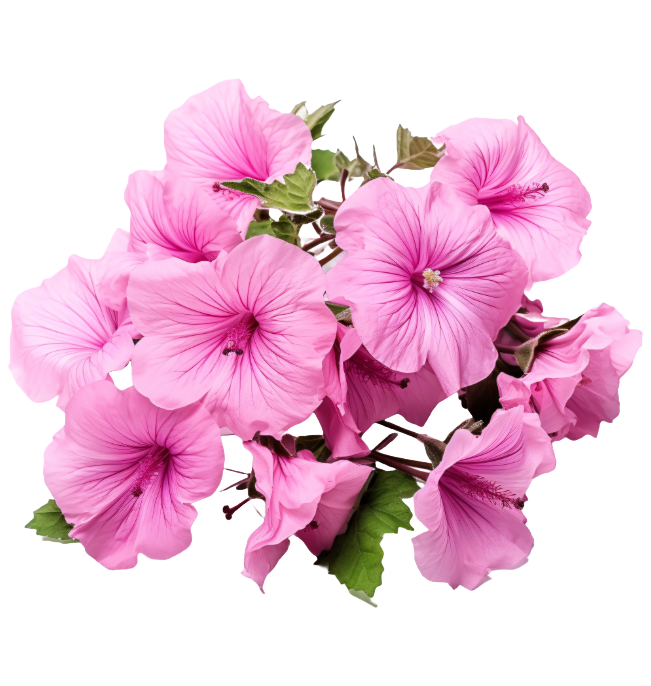
Extended Health Benefits of Hollyhocks
| Benefit | Description |
|---|---|
| Respiratory Support | Hollyhock tea can relieve respiratory issues such as congestion and soothe the throat due to its anti-inflammatory properties. It also helps expel mucus, benefiting asthmatics and those with bronchial conditions. |
| Gastrointestinal Health | Hollyhock contains demulcent and anti-inflammatory properties that soothe gastrointestinal issues like ulcers, gastritis, and irritable bowel syndrome. It also stimulates digestion and helps in treating dysentery and bloating. |
| Wound Healing | Hollyhock leaves and roots are used in poultices to reduce pain, swelling, and promote healing of wounds and ulcers. This traditional use is attributed to its antibacterial and astringent properties. |
| Anti-Inflammatory | It helps reduce inflammation in various body parts, useful for treating skin irritations, sore throat, and swelling from injuries. Anti-inflammatory properties also benefit those with arthritis or muscle inflammation. |
| Diuretic Effect | Hollyhock promotes urination, helping to clear toxins from the body and reduce urinary tract infections. The diuretic property also helps maintain kidney health and prevents stone formation. |
| Women’s Health | Hollyhock provides relief from womb and kidney irritation, helps with menstrual pain (dysmenorrhea), and supports healthy delivery. It is also used to treat vaginal infections and prevent miscarriages. |
| Moisturizing Skin | Extracts from hollyhock have strong emollient properties, making it effective in moisturizing dry skin. It forms a barrier to retain hydration and promotes softer, healthier skin. |
| Hair Care | Hollyhock oil works as a natural conditioner for dry or brittle hair, adding moisture and improving texture. It also acts as a natural dye, with certain flowers used to produce color variations. |
| Antipyretic (Fever Reducer) | Hollyhock has been used historically as a natural remedy to reduce fever by promoting sweating, aiding the body’s temperature regulation process. |
| Appetite Stimulant | Consumption of hollyhock root can help stimulate appetite, particularly beneficial for those recovering from illness. This property is attributed to substances in the root that enhance digestion. |
| Burn Treatment | Hollyhock root and stems are used to soothe burns, blisters, and reduce associated pain and swelling. It acts as a cooling and hydrating agent for affected areas. |
| Oral Health | Mouthwash made from hollyhock root is effective for teething in infants, reducing pain and irritation. It can also be used to treat bleeding gums and mouth ulcers. |
Our Latest Articles About Hollyhocks
Discover everything about Hollyhocks
No Results Found
The page you requested could not be found. Try refining your search, or use the navigation above to locate the post.
